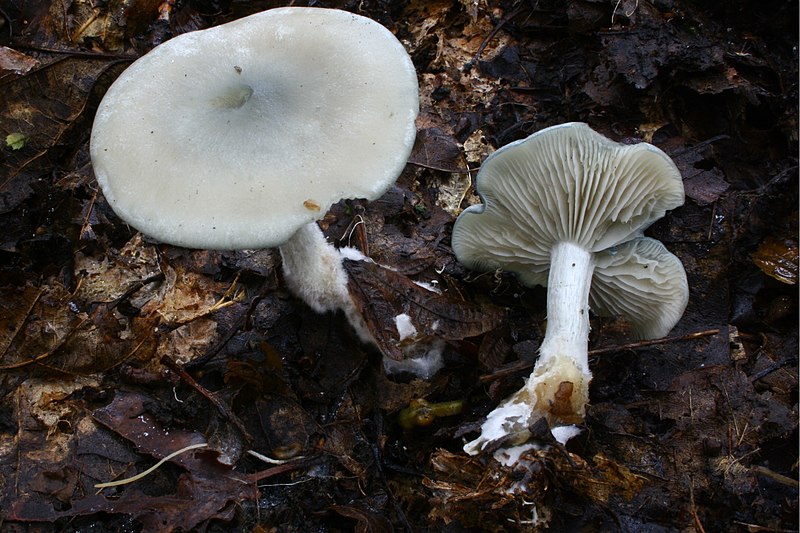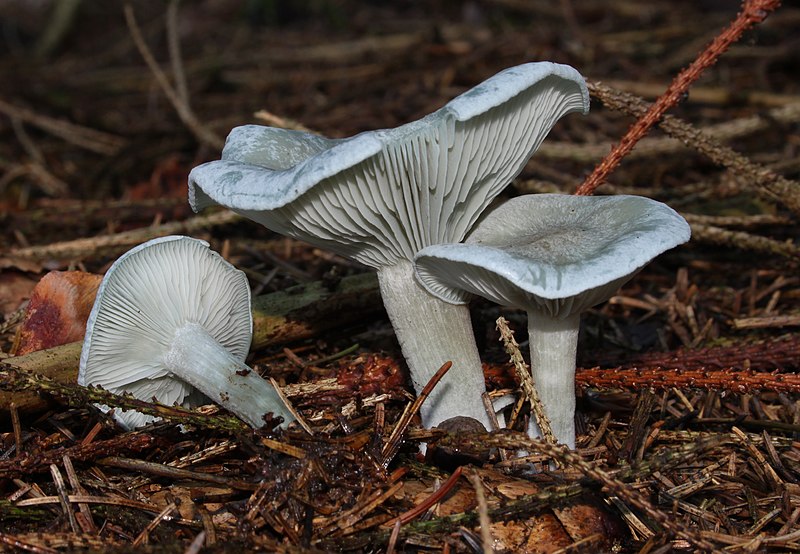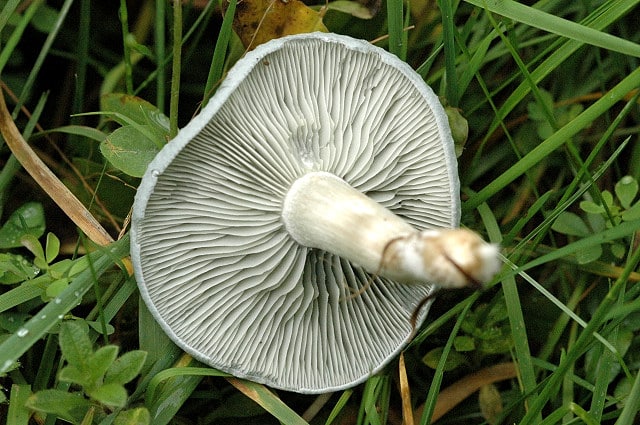Aniseed Toadstool Identification – Clitocybe odora
Heads up
Aniseed Toadstool, or scientifically known as Clitocybe odora, doesn’t just surprise with its look but also with its scent. It has a unique and strong scent, similar to the spice aniseed. This scent comes from specific chemicals, namely p-anisaldehyde and a bit of benzaldehyde.
Aniseed Toadstool: Key Parts in Photos



How to identify Aniseed Toadstool
Cap: Young Aniseed Toadstools start off with a light blue cap, which fades to grey as they get older. As they mature, the cap takes on a blue-green color, looking somewhat like a cup. It’s rough to touch. Its size can range from 1-3 inches across. With time, it becomes funnel-shaped and may even have wavy edges.
Gills: These are the underparts of the cap, where the spores come from. For the Aniseed Toadstool, they’re paler than the cap and fade as the mushroom gets older. These gills attach directly to the stem. This style of attachment is called “adnate”. Sometimes they might even run slightly down the stem, which we term as “decurrent”.
Stipe: This is the part that holds the cap up. It’s thick and textured with a pale-yellow shade. It stands 1.5-2.5 inches tall. It has no rings (those skirt-like structures on some mushrooms), and near the bottom, you might see it’s covered in white, soft fibers.
Spores: If you look under a microscope, the Aniseed Toadstool’s spores are smooth and oval-shaped. Their size is about 6-9 x 3.5-5.5µm.
Spore Print: The spore print of this mushroom is white.
Want to learn more?

Disclosure: This post includes affiliate links. If you make a purchase through these links, we may earn a commission at no extra cost to you. We appreciate your support, as it helps keep this website running. Alternatively, you can search for the book title on Amazon if you prefer not to use the links. Thank you for your understanding and support!
